So you want to work out… but you’ve got zero equipment, barely have 30 minutes to spare, and absolutely no desire to deal with gym bros or crowded classes.
Yep! Been there.
But the good news is? You actually don’t need any of that to get stronger, feel better, and start moving today.
This beginner-friendly workout guide keeps it super simple: 8 tips that actually make workouts doable, a warm-up that won’t make you feel like you’re dying, and a no-fuss, 30-minute bodyweight routine you can do in your bedroom, your living room, or wherever you’ve got a little floor space.
No confusing moves, no weird lingo, just real talk, real results, and a plan you can actually stick with.
Ready to get into it? If so, then grab a water bottle and scroll on down, or pin this for later when motivation strikes.
Your workout starter plan starts right here.
8 Must‑Know Bodyweight Tips for Total Beginners
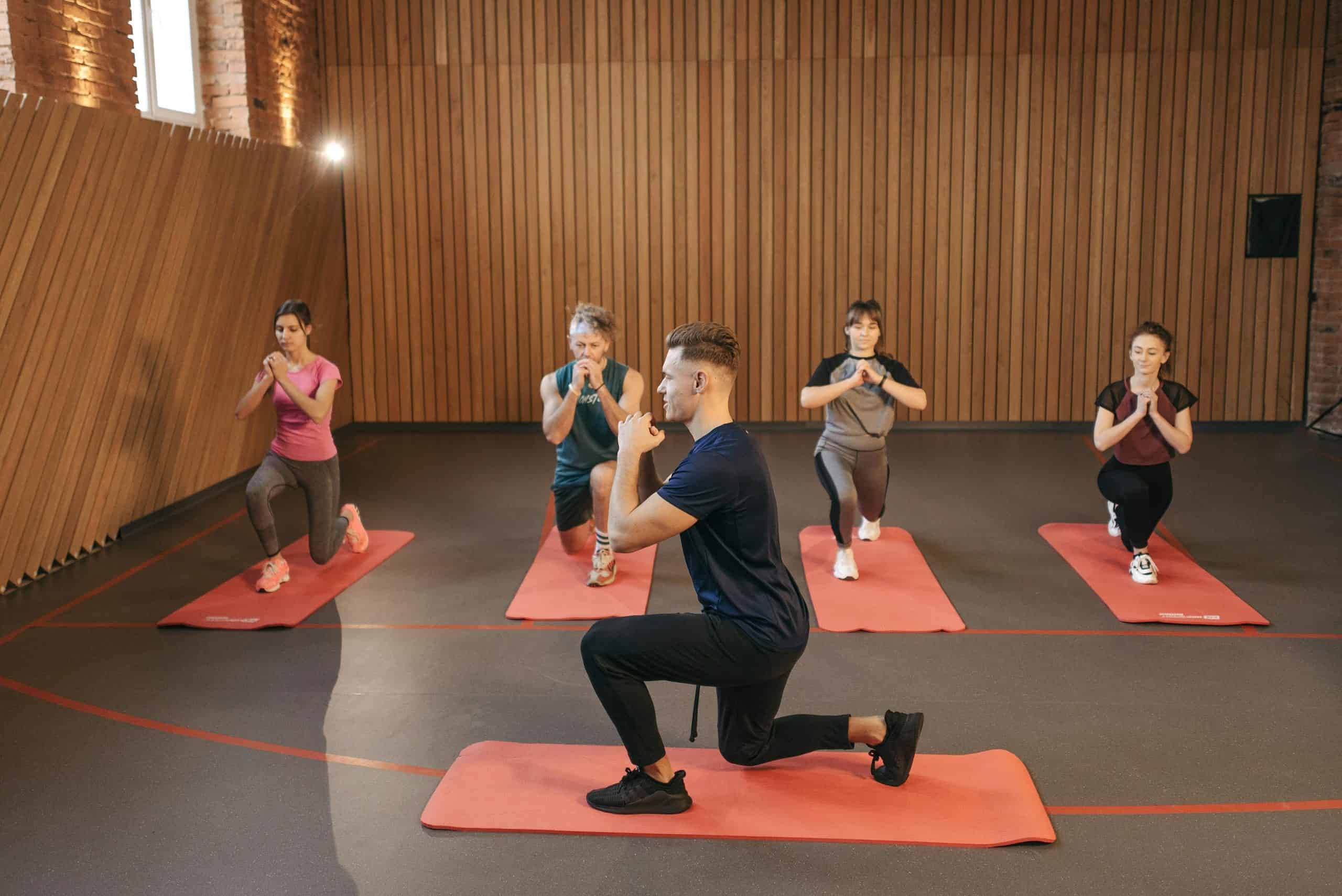
Before you jump into your first solid bodyweight workout, let’s get your mindset in the right place. These tips are simple, beginner‑friendly. (and honestly, total game‑changers if you stick with them)
Whether you’ve never done a squat in your life or you’re getting back into fitness after a long break (hello, adulting), this is your foundation.
1. Start Small, Stay Consistent
You don’t need to crush an hour-long workout on day one. (In fact, please don’t)
Starting with just 10–15 minutes a few times a week is more than enough to build momentum.
Showing up even for a short session is how you start to create a real habit. Don’t underestimate what small, consistent efforts can do.
Progress stacks fast when you just keep showing up.
2. Form First, Ego Later
It’s tempting to blast through reps to feel like you’re doing something, but rushing leads to sloppy movement (and possibly injuries).
So, instead of rushing through, you should focus on doing each move with clean, controlled form, even if that means fewer reps or using the beginner version.
Bonus tip: prop up your phone and record one set. Watching it back is super helpful for fixing posture and alignment.
3. Calendar It Like Coffee
If you wouldn’t skip your morning coffee, don’t skip your workout either.
Add it to your calendar, set a phone reminder, or tie it to a habit you already do like stretching after brushing your teeth.
The more routine it feels, the less decision fatigue you’ll have around actually doing it.
4. Music = Momentum

There’s something about the right playlist that makes you move better, push harder, and finish strong. Look for songs in the 120–140 BPM range, that’s a sweet spot for bodyweight circuits.
Think upbeat, energizing, and maybe even a little dramatic (Beyoncé workout mix? Yes, please).
5. Write Down Your Wins
You don’t need a fancy journal or app to just track your reps, rounds, or even how you felt during the workout. Seeing your progress written down makes it way easier to stay motivated and spot your improvements over time.
“Today I held a plank for 20 seconds without collapsing” is a legit win.
6. Celebrate Micro-PRs
A PR (personal record) doesn’t have to be some giant milestone.
Did you do one more push-up than last week? That counts.
Did you finish a workout without taking an extra break? Huge.
Small victories = proof you’re improving. And honestly? You deserve to feel proud after every single one.
7. Sleep & Protein Are Secret Sauce
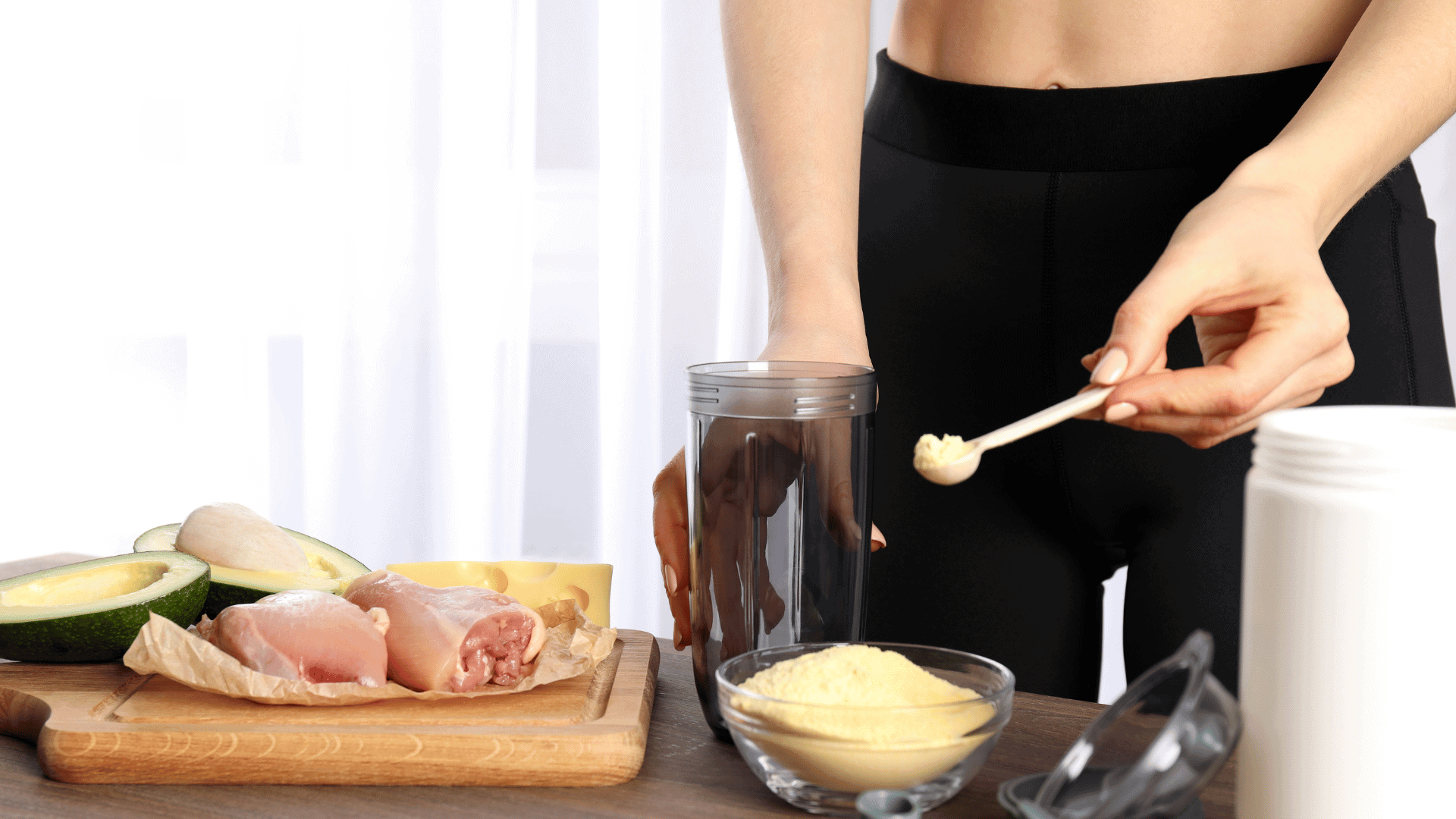
Here’s something people don’t say enough: your body changes when you rest, not just when you’re working out. Getting 7–9 hours of quality sleep and eating enough protein will help your muscles recover, rebuild, and show up stronger next time.
(No rest = no results. Period)
8. Level Up Slowly
Once things start to feel easier (and they will!), don’t jump to crazy-hard variations right away.
Instead, add another round, increase your reps a little, or slow down your tempo for more control. Gradual progression is safer, smarter, and way more sustainable than going full beast mode out of nowhere.
5‑Minute Warm‑Up to Get Your Body Ready
Before you jump into the workout, it’s important to warm up your body the right way.
A warm-up helps your muscles loosen up, gets your blood flowing, and prepares your joints to move safely. Think of this as your body’s “wake-up call” before you start the real work.
This warm-up takes just five minutes. There’s no need for equipment, just a little space and a willingness to move. Let’s go step by step.
First, march in place for 30 seconds.
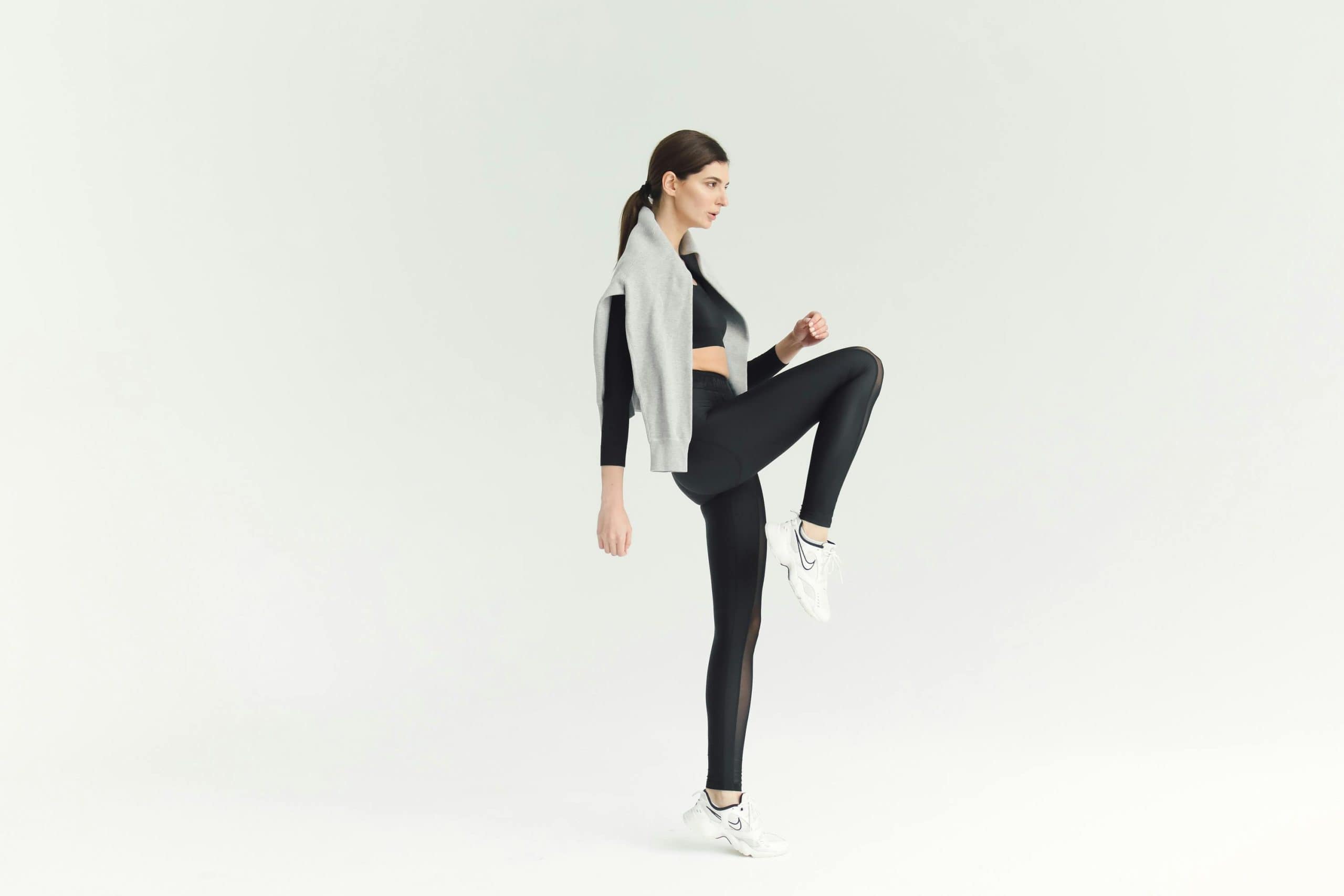
Stand up straight with your feet under your hips. Begin lifting one knee at a time like you’re walking in place, but stay in one spot. Swing your arms naturally as you move. This gets your heart rate up gently and warms up your legs.
Try to keep your shoulders relaxed and breathe steadily as you go.
Next, do arm circles for 30 seconds.
Raise both arms out to the sides so your body forms a T shape. Then, start making small, forward circles with your arms. And after 15 seconds, switch directions and make small backward circles. Keep your arms straight and your neck relaxed.
This move helps loosen up your shoulders and upper back. (especially helpful if you’ve been sitting a lot)
Then, move into 30 seconds of hip hinges.
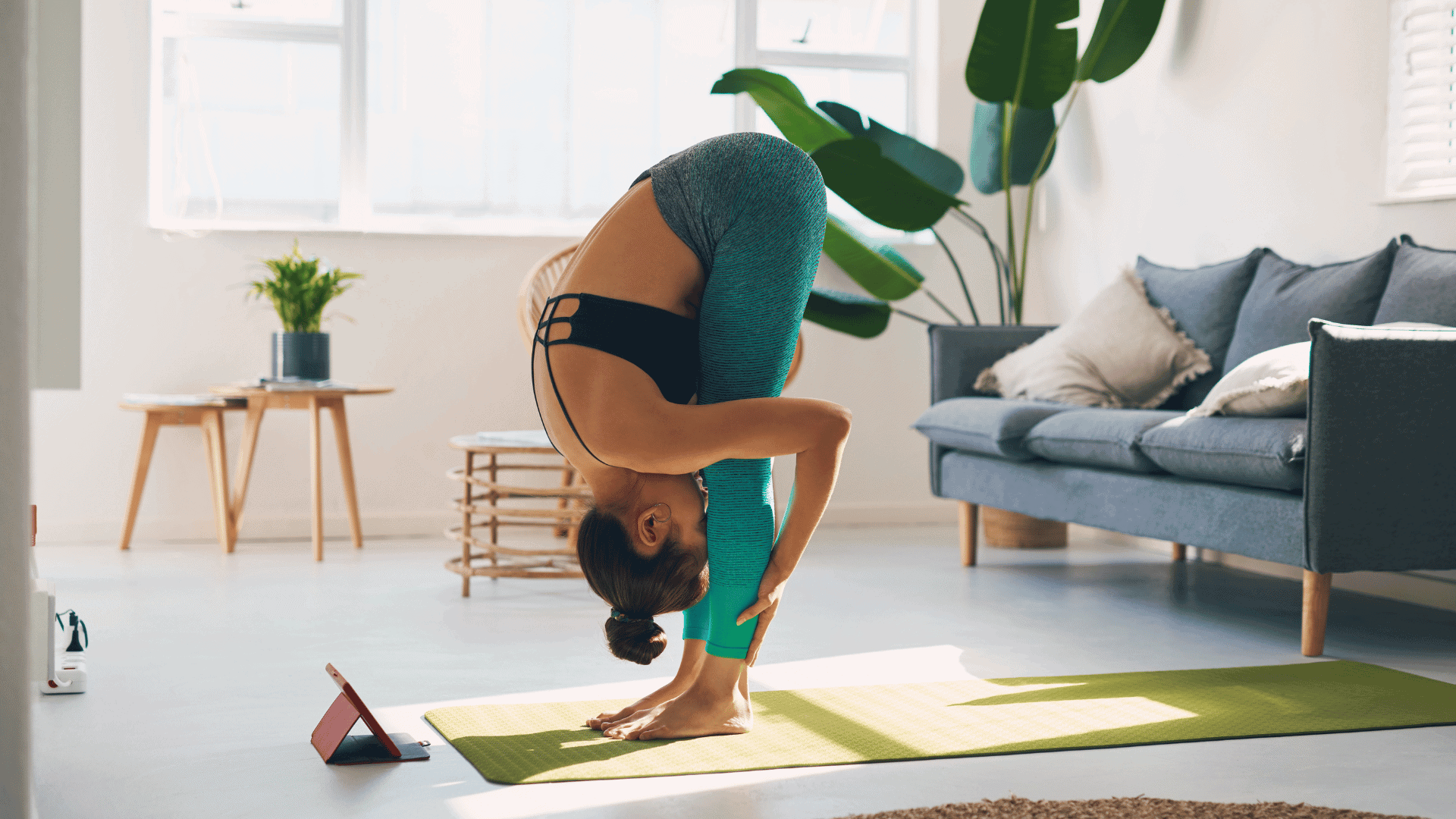
Keep your feet about shoulder-width apart and bend your knees just a little. Push your hips back while keeping your back flat and your head in line with your spine. You should feel a stretch in the back of your legs. Then, stand back up.
This movement gets your hips and hamstrings ready to support your lower body during squats and lunges.
After that, do 30 seconds of good-mornings.
Place your hands lightly behind your head with your elbows pointing out. Keep your chest lifted.
Just like with the hip hinges, push your hips back and lower your upper body slightly forward. Then return to standing. Keep the movement slow and controlled.
This light morning stretches warms up your back, hips, and legs while encouraging better posture.
Now, let’s add some movement with inch-worms for 60 seconds.
Start by standing tall. Then, slowly bend forward and reach your hands toward the floor. If you need to, bend your knees to comfortably get your hands down.
Next, walk your hands forward until your body forms a straight line, like the top of a push-up. Hold that position briefly, then slowly walk your hands back toward your feet and return to standing.
Keep repeating this sequence at a steady pace. This full-body movement effectively wakes up your arms, shoulders, core, and legs all at once.
Lastly, finish with 1 minute of air squats.
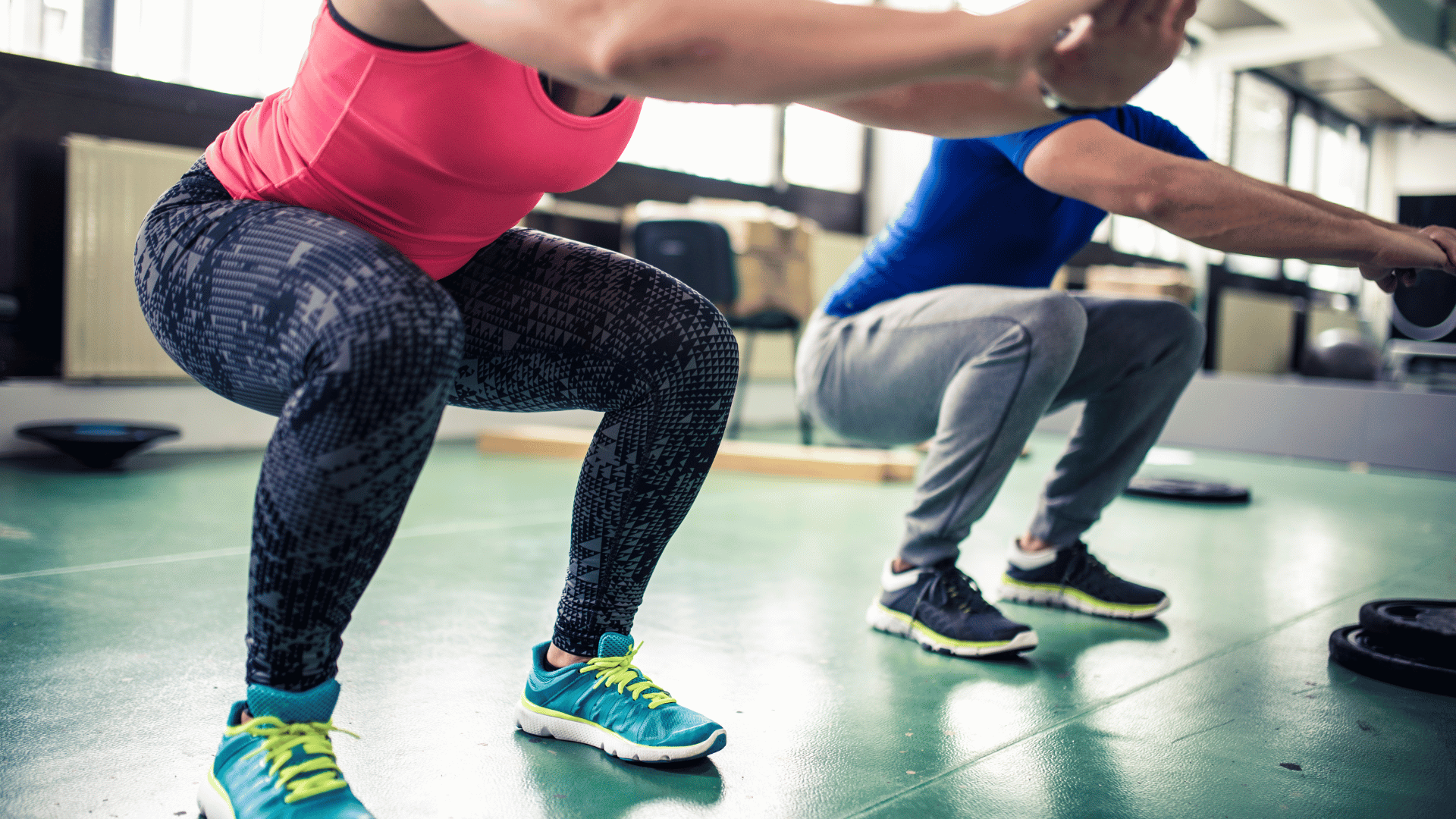
Finally, after completing the previous sequence, finish off with 1 minute of air squats.
Start by standing with your feet a little wider than your hips and toes turned slightly outwards. Lower your body as if you’re sitting back into a chair.
Remember to keep your chest up, your back flat, and ensure your knees track over your toes without collapsing inward. Only go as low as feels comfortable, then stand back up.
Air squats effectively prepare your legs, hips, and core for the main workout ahead.
30‑Minute Beginner Bodyweight Circuit
Now that your body’s warmed up and ready, it’s time to get into the workout.
This beginner-friendly routine is designed to be simple and doable. You won’t need any equipment, just your own body and enough space to move around comfortably.
You’ll go through seven basic exercises in a row. (That makes up one round.)
After you finish the last move, rest for 60 seconds. Then, go back to the top and repeat everything two more times. Altogether, it should take you about 30 minutes to complete all three rounds.
Don’t worry about doing everything perfectly. If you need to pause or adjust the pace, that’s totally fine. What matters most is showing up and focusing on your form. Take your time and let your body figure things out as you go.
Let’s walk through each move step by step.
1. Bodyweight Squat – 15 reps

Start by standing with your feet just a little wider than your hips. Point your toes slightly outward. From there, lower your body down like you’re about to sit in a chair behind you.
Keep your chest up and your heels flat on the floor. Your knees should stay in line with your toes, not falling inward.
Once you’ve reached a comfortable depth, press through your heels to stand back up. That’s one rep.
(If your thighs start burning halfway through, that’s a good sign. It means your muscles are finally clocking in)
2. Knee Push-Up – 10 reps
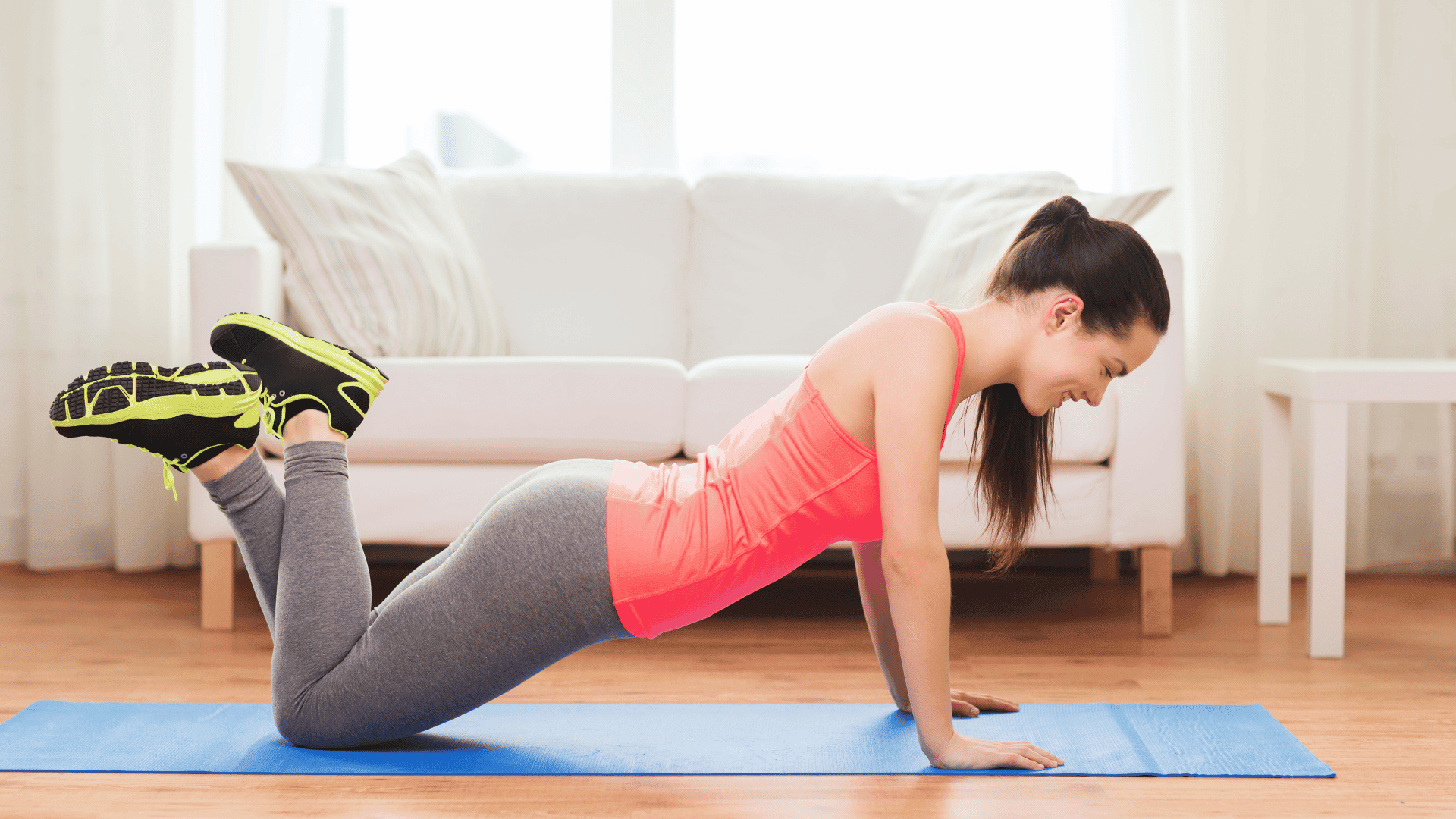
Come down onto all fours. Then, walk your hands a few inches forward so that your body forms a straight line from your head to your knees. Your hands should be just outside your shoulders.
Slowly lower your chest toward the ground by bending your elbows, then press yourself back up. Try not to let your hips sag or your head drop.
Keep your eyes focused on the floor about a foot in front of you, like you’re reading a text from a safe distance.
3. Walking Lunge – 10 reps per leg
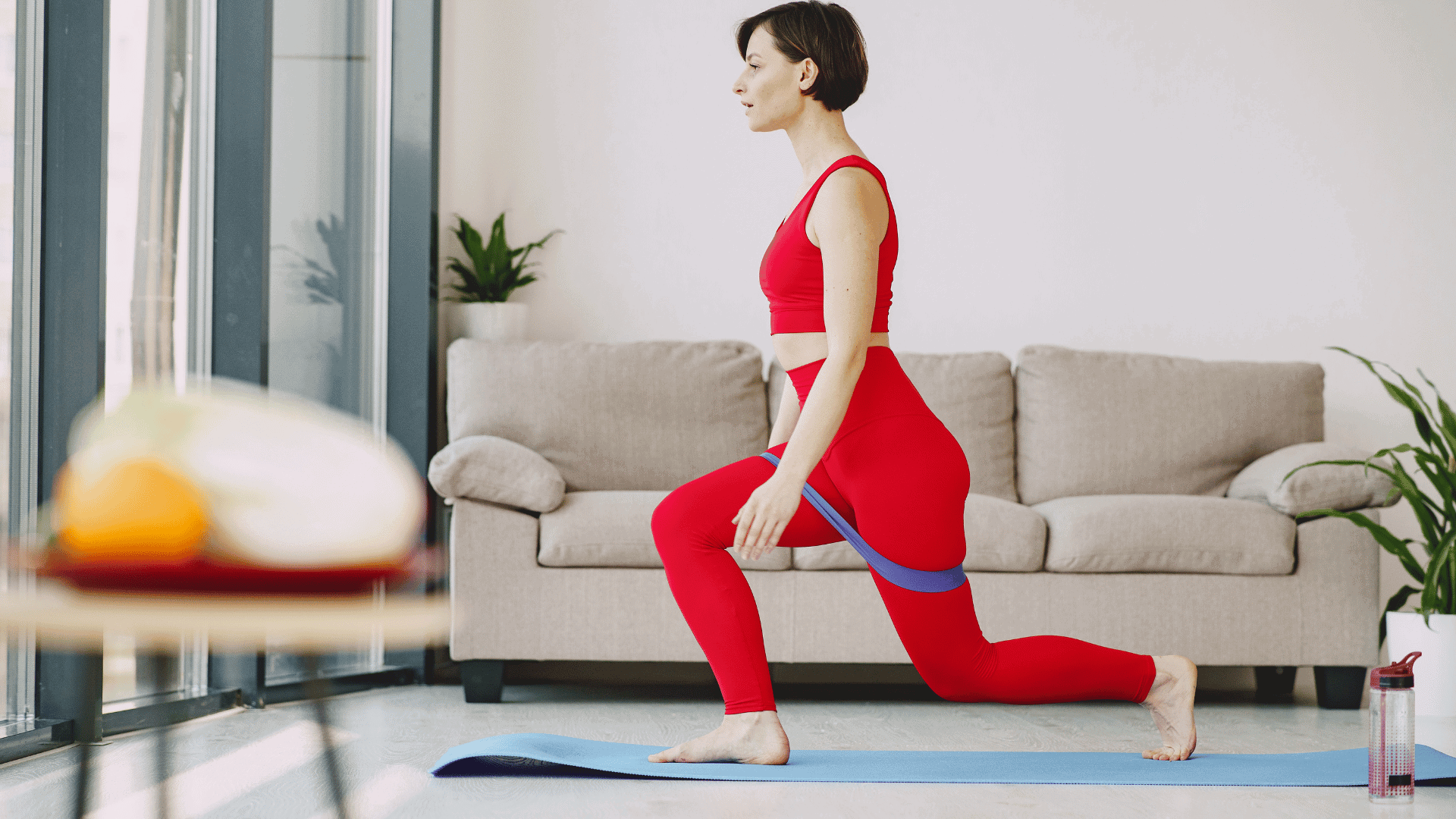
Start by standing tall with your feet together. Then, step forward with your right leg and lower your body until both knees are bent at about 90 degrees. Your front knee should stay over your ankle.
After that, push off your back foot to stand up, then step forward with the other leg. Alternate legs for 10 steps each.
Helpful tip: Keep your upper body straight, and don’t lean forward.
4. Backpack Row – 12 reps per arm
Grab a backpack or any sturdy bag you can add weight to. Think books, water bottles, or even a couple of canned beans. Hold it in one hand and stand with your feet shoulder-width apart.
From there, slightly bend your knees and hinge forward at the hips, keeping your back flat. Let the bag hang straight down. Now pull your elbow up toward your ribs, then slowly lower it back down.
Complete all 12 reps on one side before switching arms.
5. Forearm Plank – Hold for 30 seconds

Lie down on your stomach, then place your forearms on the ground with your elbows under your shoulders. Tuck your toes and lift your body up, balancing on your forearms and toes.
Your body should form a straight line from your head to your heels. Keep your belly pulled in and your hips steady. (not sagging or sticking up)
If 30 seconds feels too long, start with 15 seconds, take a short rest, and then try another 15. That still counts. Holding still is harder than it looks, especially when your core is doing the work.
6. Glute Bridge – 15 reps
Lie on your back with your knees bent and your feet flat on the floor. Your arms should rest at your sides. From here, push through your heels and lift your hips toward the ceiling. At the top, your body should form a straight line from your knees to your shoulders.
Pause for a second, squeeze your glutes, then lower your hips back down slowly.
This effective glute workout is great for your butt, your back, and your mood, especially when you start feeling stronger after just a few workouts.
7. Jumping Jacks – 30 reps
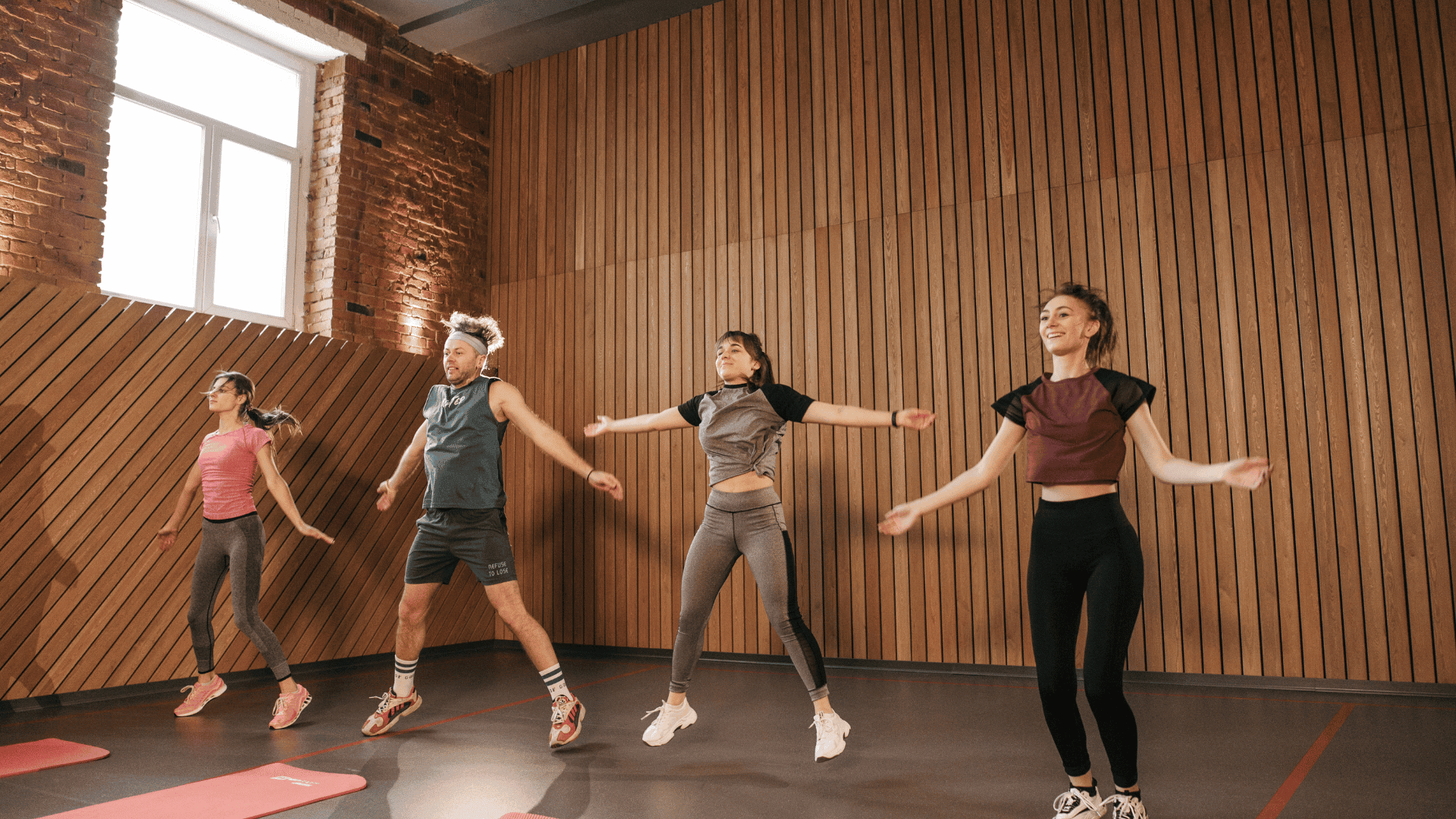
Stand tall with your feet together and arms at your sides. Jump both feet out wide while raising your arms overhead, then jump back to the starting position.
That’s one rep. Keep moving at a steady pace.
If your knees don’t love jumping, no problem. Step one foot out at a time while raising your arms instead. You’ll still get your heart rate up. (minus the impact)
Do each move in order → Rest 60 seconds → Repeat for 3 rounds
| Move | Reps/Time | How to Do It | Helpful Cue |
| Bodyweight Squat | 15 reps | Stand with feet slightly wider than hips, lower down like sitting in a chair, then stand back up. | Push hips back, keep heels flat. |
| Knee Push-Up | 10 reps | Start on knees, hands under shoulders. Lower your chest down, then push back up. | Keep a straight line from head to knees. |
| Walking Lunge | 10 per leg | Step forward, bend both knees to 90°, then push off to switch legs. | Knee over ankle, chest up. |
| Backpack Row | 12 per arm | Hold a loaded backpack, bend slightly forward, pull elbow up, then lower slowly. | Squeeze shoulder blade at the top. |
| Forearm Plank | 30 seconds | Hold yourself up on forearms and toes, keeping body in a straight line. | Tighten core, don’t let hips drop. |
| Glute Bridge | 15 reps | Lie on your back, feet flat. Push hips up, pause, then lower down. | Press through heels, squeeze glutes. |
| Jumping Jacks | 30 reps | Jump feet out while raising arms overhead, then return to start. | Land soft, move at a steady pace. |
Tip: If you’re new, start with 2 rounds. If you’re feeling good, go for 3. Rest 60 seconds between each round.
7‑Day Starter Schedule to Build Your Routine

Now that you’ve got the workout down, it’s time to make a plan that sticks.
Starting a new fitness habit doesn’t mean working out every single day. In fact, your body needs rest to get stronger.
That’s why this simple weekly schedule includes movement, recovery, and flexibility. Here’s a balanced 7‑day starter routine to follow during your first two weeks:
Monday, Wednesday, and Friday: 30-Minute Bodyweight Circuit
These are your main workout days.
You’ll go through the full 30‑minute workout routine you learned earlier. If three times a week feels tough at first, aim for two and build up. The goal is to stay consistent, not perfect.
Tuesday and Thursday: Light Movement
On the days between your workouts, keep your body moving with something gentle. You can take a 10‑minute walk, do light stretching, or even try a beginner yoga video.
This helps reduce soreness and keeps your body flexible without pushing too hard.
Saturday: Optional Dance-Party Cardio
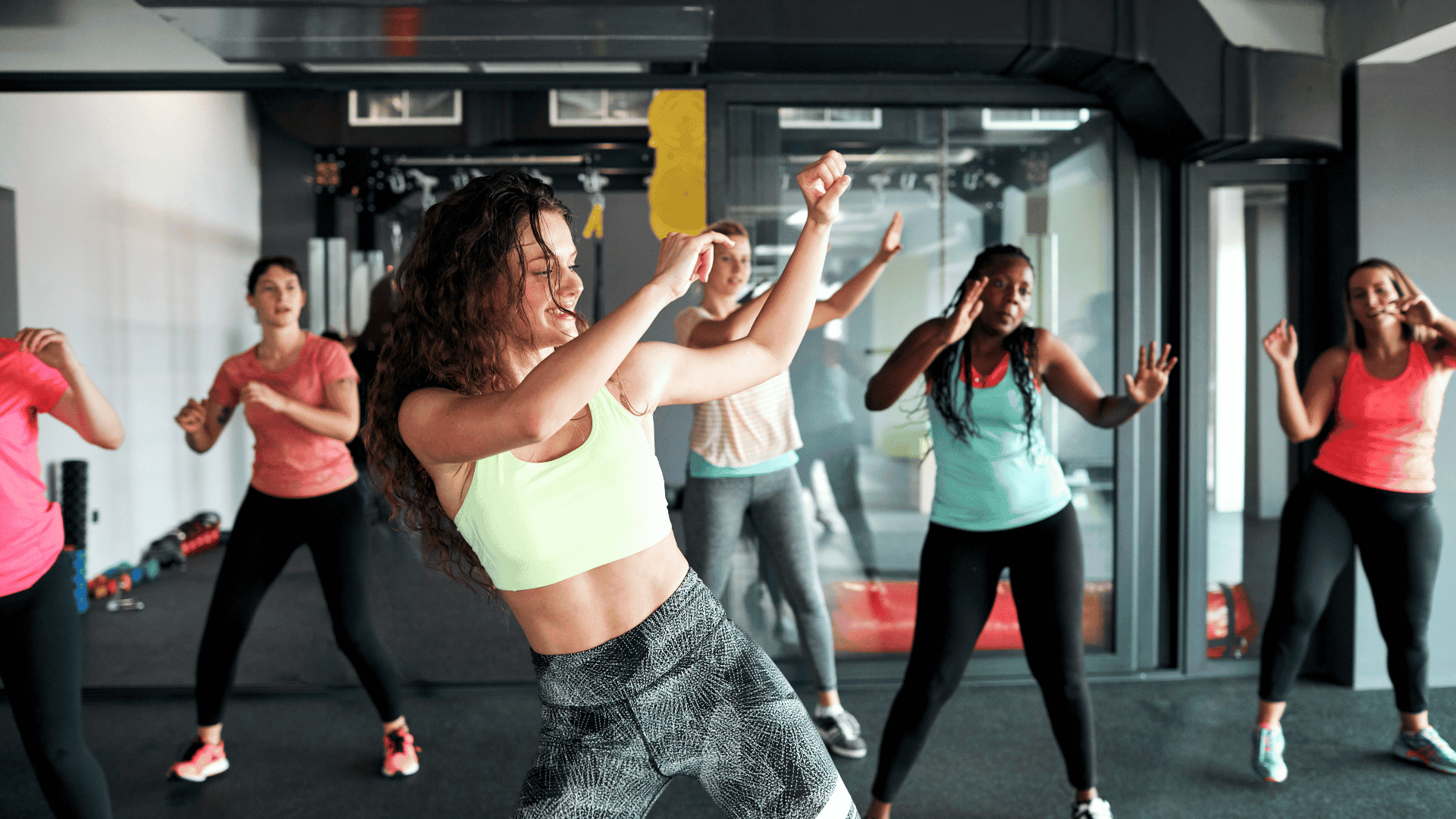
If you’re feeling good and have some energy, turn on your favorite playlist and move for fun. It doesn’t have to be fancy, just dance around, move your body, and enjoy it.
This is optional, but it’s a great way to stay active without making it feel like a chore.
Sunday: Full Rest
Rest is part of the plan. Take the day off to let your body recover. Go for a slow walk if you’d like, but no workout is required.
Rest days help your muscles rebuild and give your brain a break too.
Then, after 2 Weeks. Make It a Little Harder
Once your body starts to get used to the routine, you can increase the challenge without changing everything. Here are two simple ways to do that:
– Add a 4th round to your circuit days
– Or add 5 more reps to each exercise
Choose the one that feels right for you. Keep listening to your body and build at your own pace.
You Already Started, Now Keep It Going
If you’ve made it this far, that means you’ve done something huge and you’ve taken the first step.
You learned 8 smart tips to help you stay consistent, went through a full-body warm-up, followed a 30-minute beginner workout, and now have a clear weekly plan to guide your routine.
And that’s a strong start.
It’s easy to feel like you need to do everything perfectly, but the truth is: showing up is what matters most.
Whether you finish all three rounds or only make it halfway through, you’re moving your body and building a habit. That counts.
Keep it simple, keep it doable, and let it grow from there.
As you go through your first week, pay attention to the little wins. Maybe you held a plank longer than you expected. Maybe you finished your second round when you thought you’d quit after one.
These moments are proof that you’re already getting stronger.
If you found this guide helpful, share it with a friend who’s also just getting started. And when you finish your first week, take a minute to pause and feel proud.
You don’t need to wait to earn that because…
YOU already did.
Build Consistency With a Simple Weekly Plan

You’ve just learned how to start a bodyweight workout as a beginner. (no equipment, no fuss) just moves that get you stronger and more confident right at home.
But the hardest part isn’t starting, it’s staying consistent week after week.
That’s why we created the Weekly Workout Schedule. It takes the guesswork out of your routine and helps you stay on track without stressing over what workout to do each day.
Frequently Ask Question
1. Will this help me burn fat or just tone?
It can do both. This workout builds strength and gets your heart rate up, which helps your body burn calories. If you’re also eating balanced meals and staying active throughout the week, you’ll likely notice fat loss over time. “Toning” basically means building muscle while lowering body fat, and this kind of training supports both.
2. How soon will I see results?
You might feel results before you see them. Within a week or two, you may notice better energy, improved mood, and less stiffness. Visible changes like muscle definition or weight loss can take a few weeks to a couple of months. It depends on your starting point, consistency, and what else you’re doing (like nutrition and sleep). Stick with it. The results will come.
3. My knees hurt during squats. What should I do?
First, double-check your form. Your knees should line up with your toes and not move too far forward. Try squatting to a chair or not going as deep. You can also slow the movement down to stay more in control. If the pain continues, skip squats for now and do glute bridges or wall sits instead. And if pain ever feels sharp or sudden, stop and talk to a professional.
4. When should I add resistance bands or weights?
If the workout starts feeling too easy even after doing 3 or 4 rounds you’re probably ready to level up. You can add a resistance band around your thighs for squats or use light dumbbells or household items (like water bottles or a backpack) to make moves harder. Just make sure you’re still using good form as you increase the challenge.
5. Can I do this workout every day?
Not every single day. Your muscles need time to recover and grow. Stick to 3 non-consecutive days per week (like Monday, Wednesday, and Friday). On the other days, try light stretching, walking, or something low-impact. Rest days aren’t lazy, they’re part of the plan.










